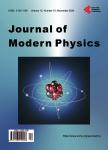Anisotropy of Stable Single Domain Ferrimagnetic Particles in a Rock Sample from Gyroremanent Magnetization and Comparison with Other Anisotropy Methods
Anisotropy of Stable Single Domain Ferrimagnetic Particles in a Rock Sample from Gyroremanent Magnetization and Comparison with Other Anisotropy Methods作者机构:Department of Physics University of Alberta Edmonton Canada CNOOC Petroleum North America ULC Calgary Canada
出 版 物:《Journal of Modern Physics》 (现代物理(英文))
年 卷 期:2019年第10卷第6期
页 面:673-686页
学科分类:1002[医学-临床医学] 100214[医学-肿瘤学] 10[医学]
主 题:Anisotropy Gyroremanence Isothermal Remanence Magnetic Susceptibility Shear Wave Velocity
摘 要:The orientation of stable single domain (SSD) ferrimagnetic particles in an igneous rock sample was determined by a sensitive technique utilizing gyroremanent magnetization (GRM). Components of GRM were measured in the sample upon exposure to an alternating field (AF) at various orientations in 3 orthogonal planes. The major components of GRM exhibited a sin(2θ) dependence on AF orientation in the respective perpendicular planes. This was in accordance with theory [1] and contrary to some previously reported experimental results on magnetic recording tape, which produced a distorted sin(2θ) dependence of the GRM [1]. The explanation is likely due to the SSD ferrimagnetic particles in the rock sample being more dispersed (less interacting) compared to the highly interacting SSD particles in the magnetic tape sample of the previous study. The GRM results were consistent with another remanence anisotropy method, anisotropy of isothermal remanent magnetization (AIRM). This method again measures the anisotropy of the remanence carrying ferrimagnetic particles, but the IRM is also acquired by larger multidomain (MD) particles as well as by the SSD particles. The results were also consistent with the visible rock anisotropy (petrofabric), the anisotropy of magnetic susceptibility (AMS), and the shear wave velocity anisotropy. A comparison of all the methods demonstrated that the fine SSD particles, which make up only a small proportion of the rock, were aligned in quite a similar orientation to that of the main rock forming minerals that constituted the bulk of the sample.



